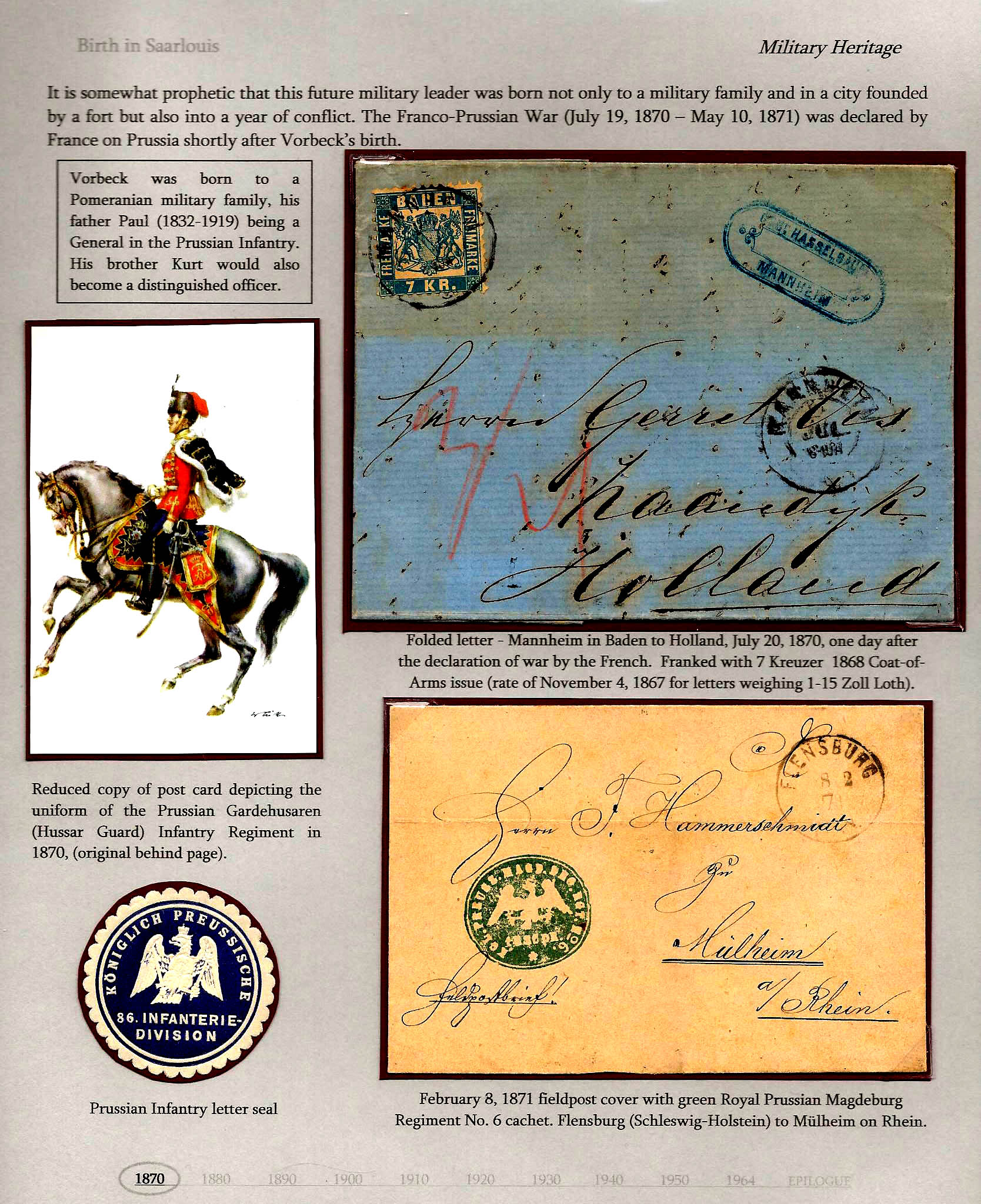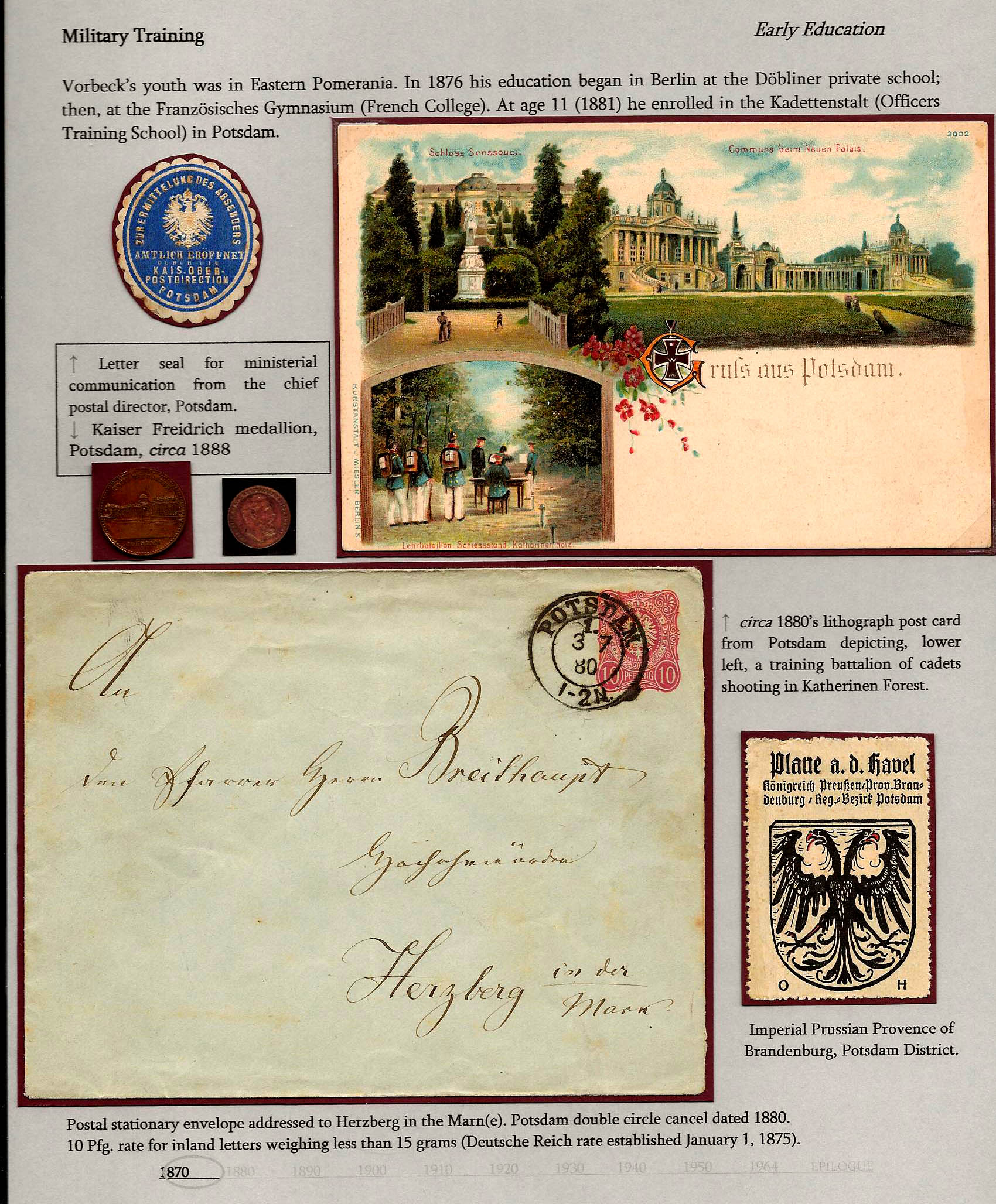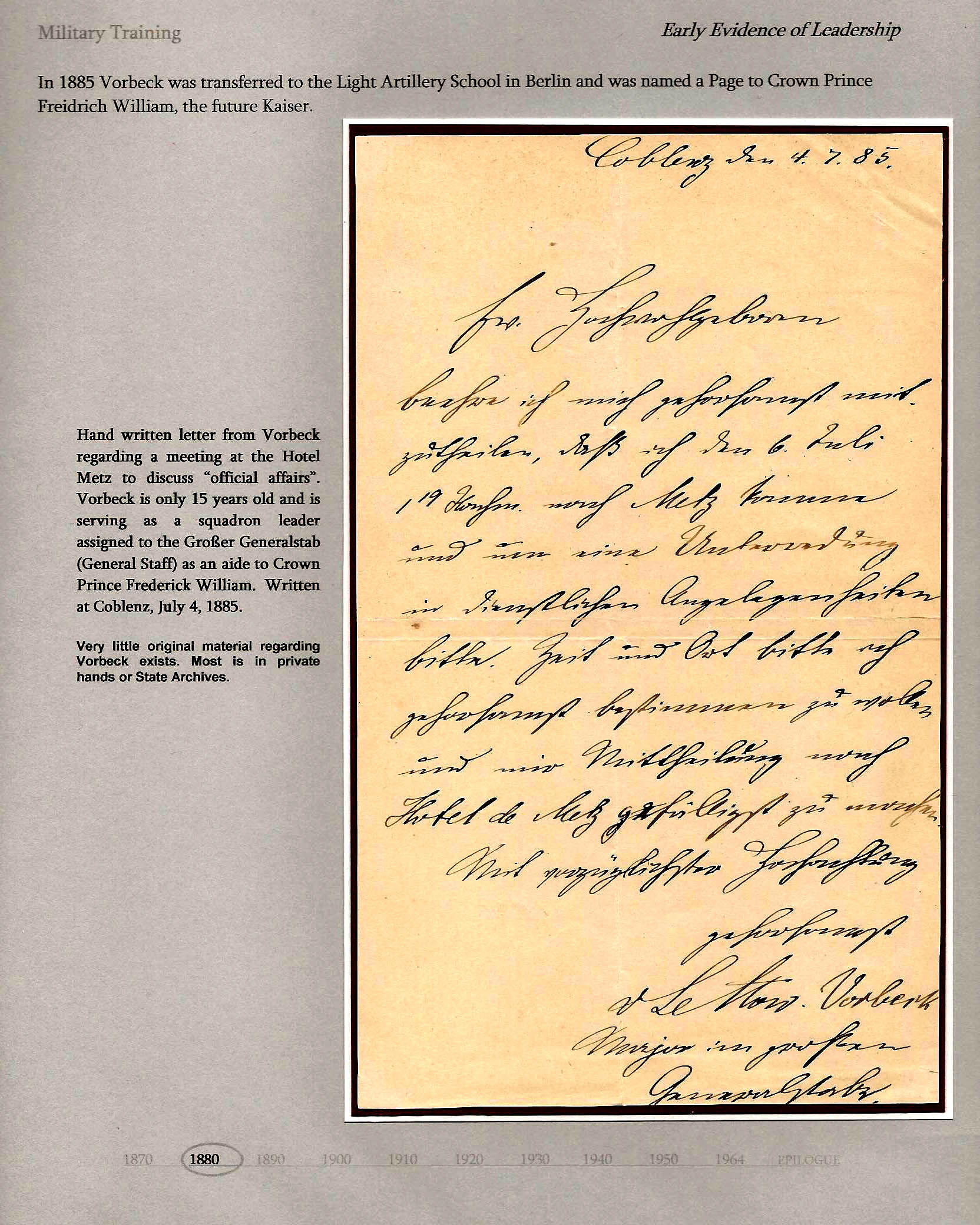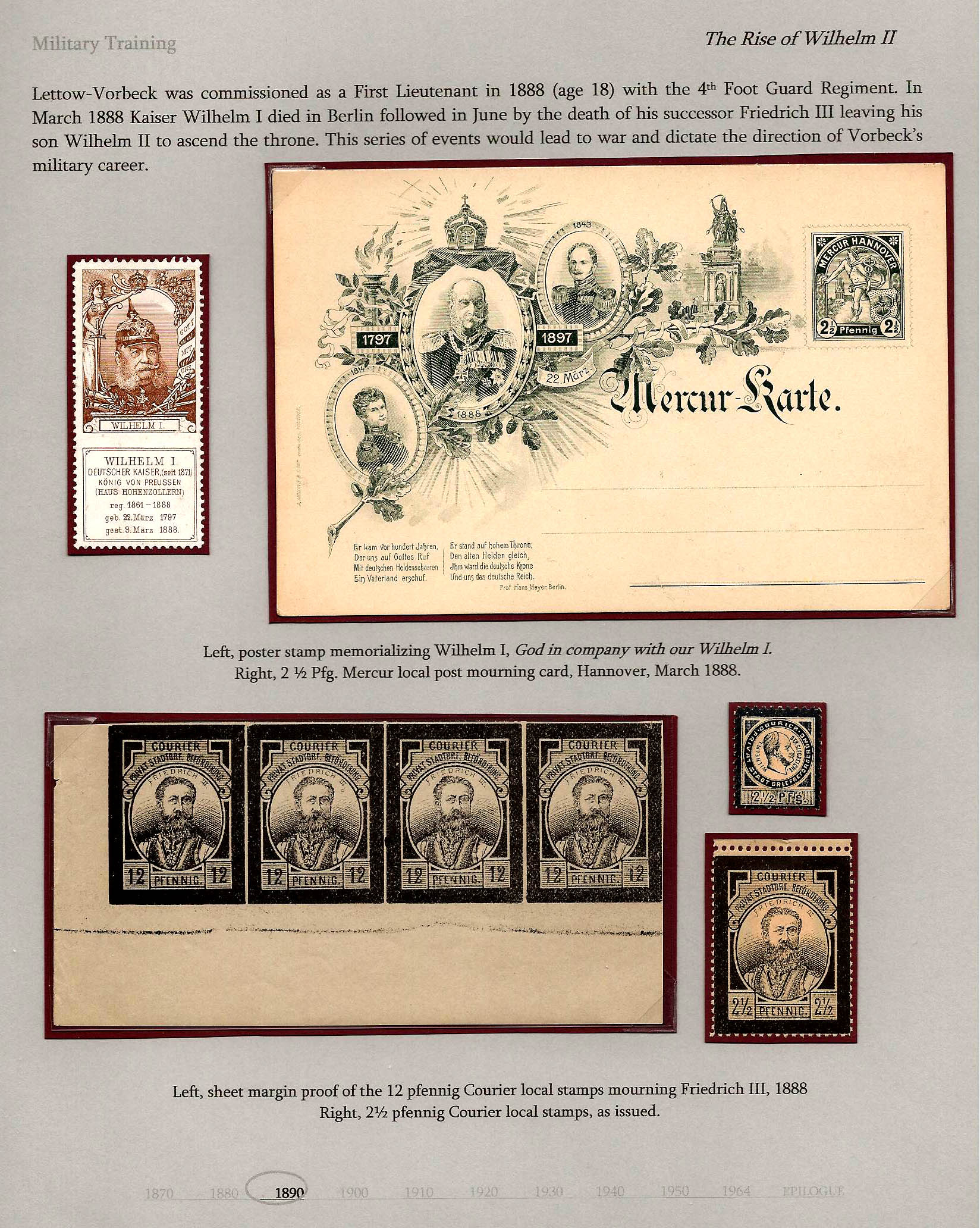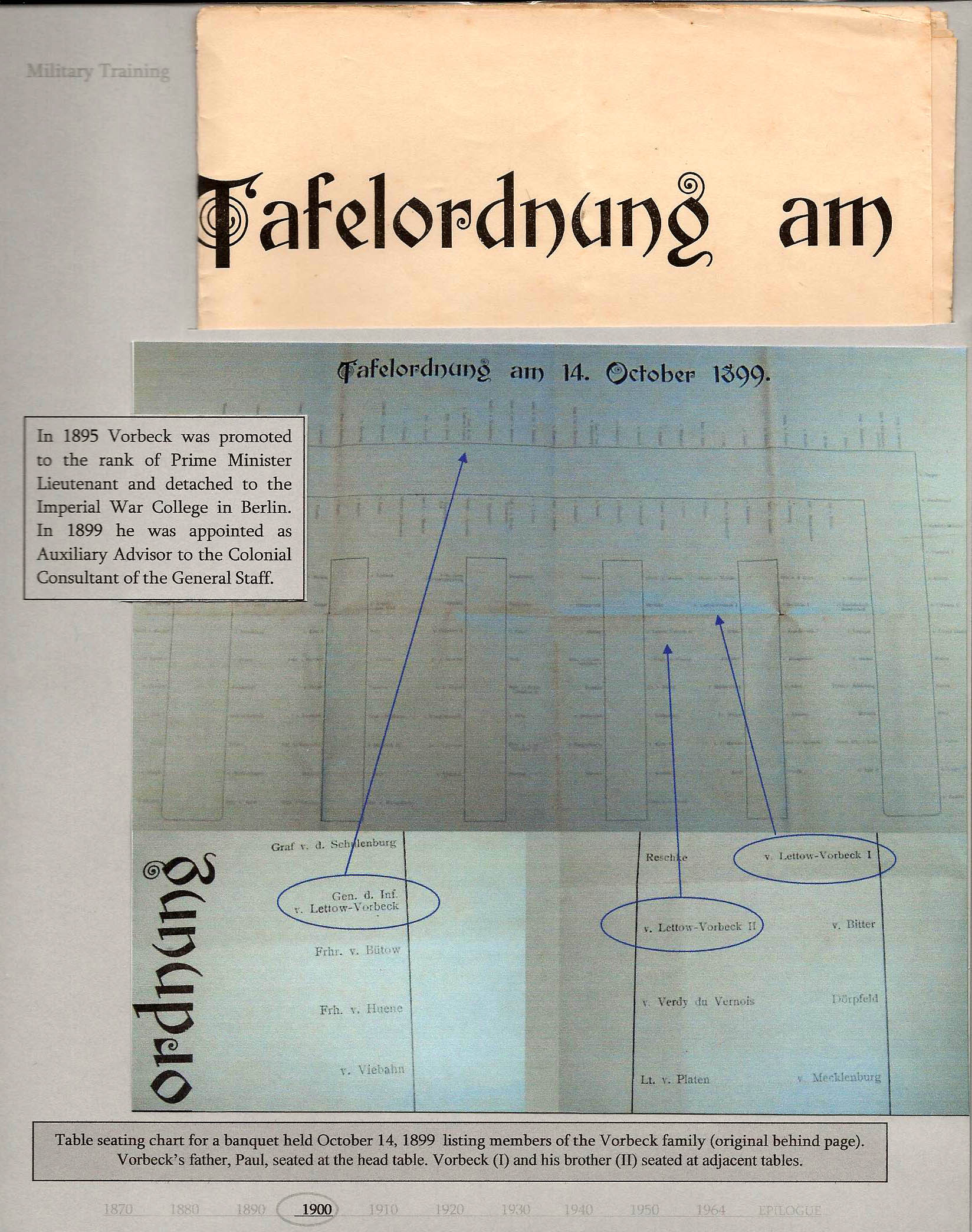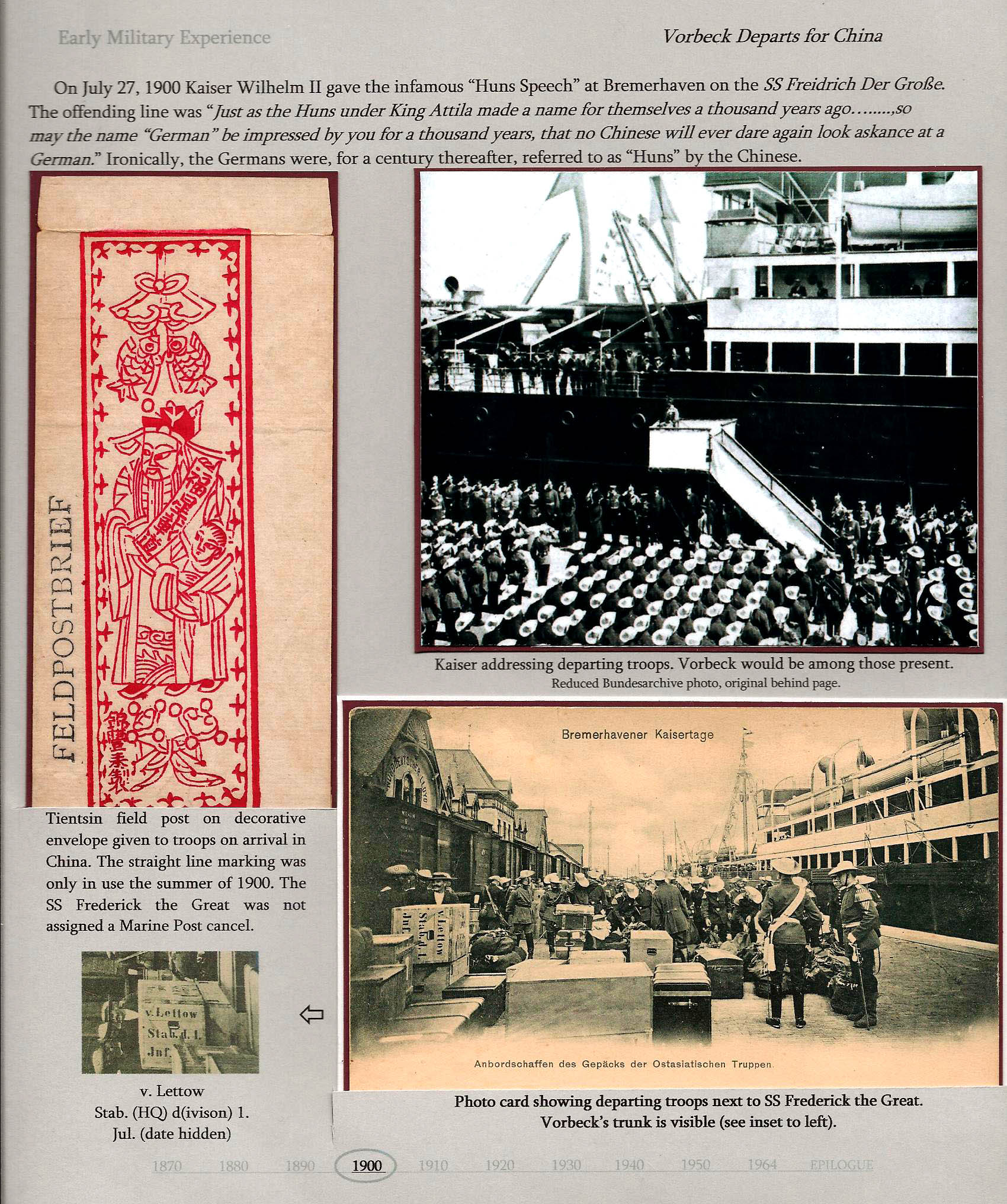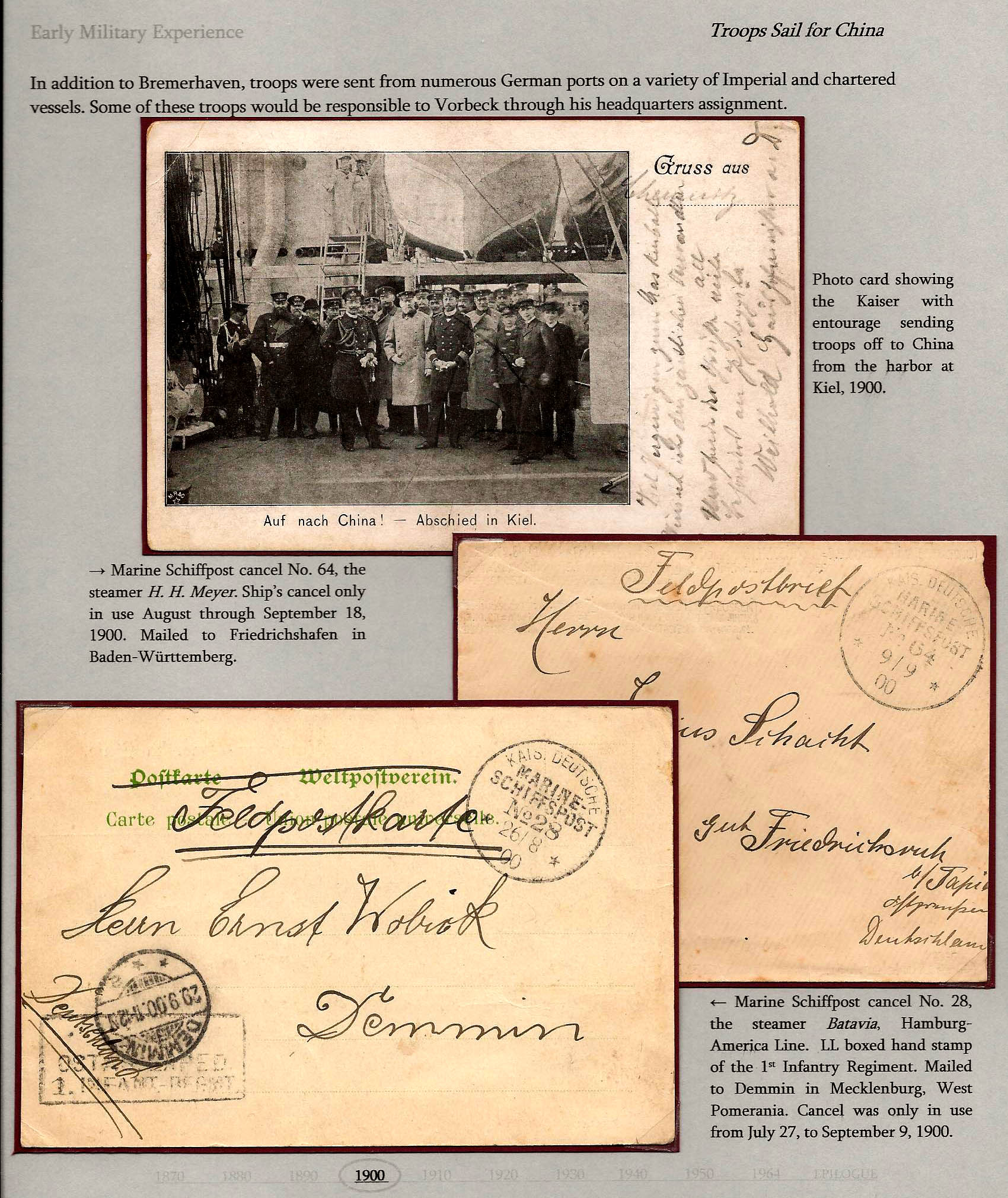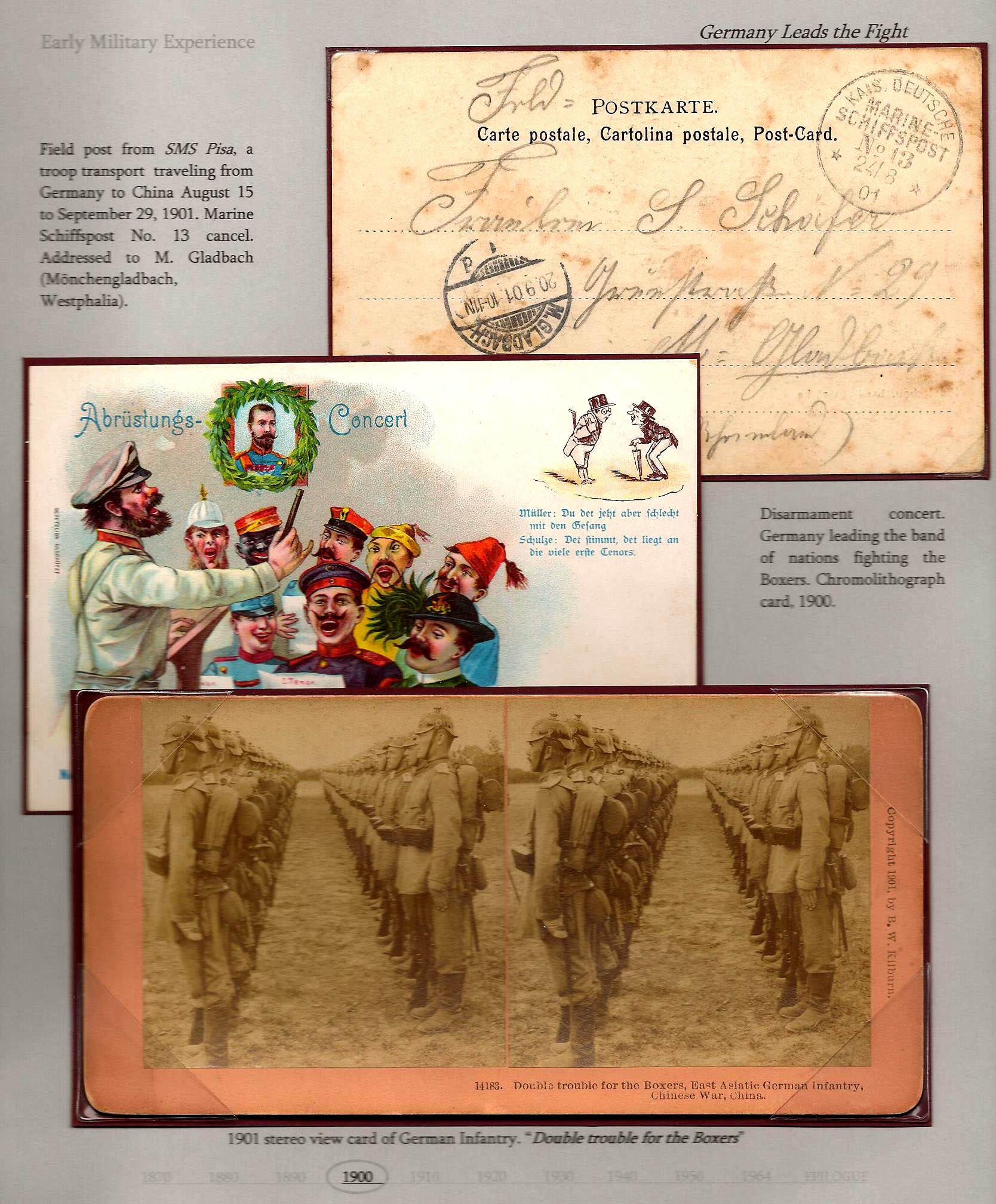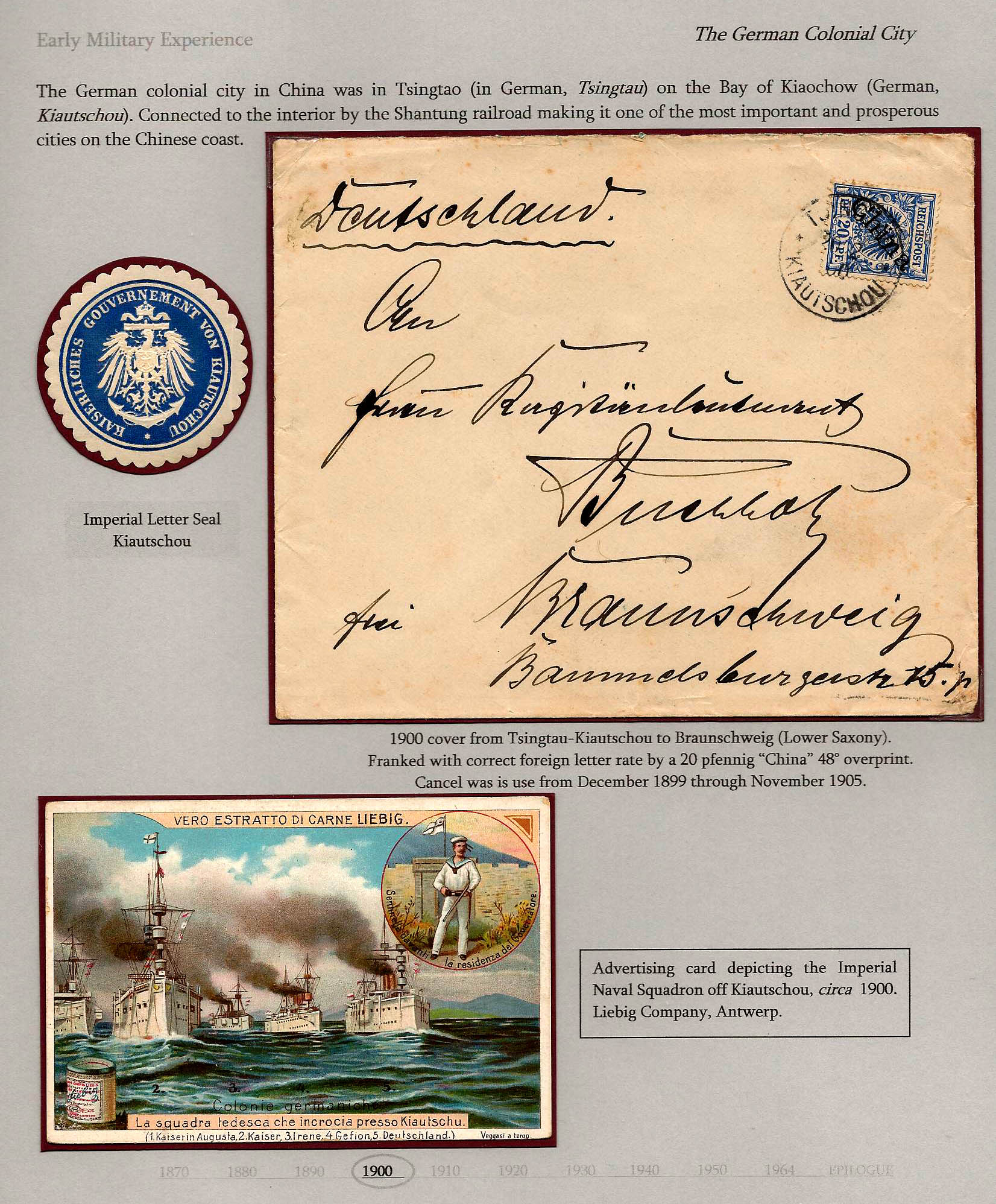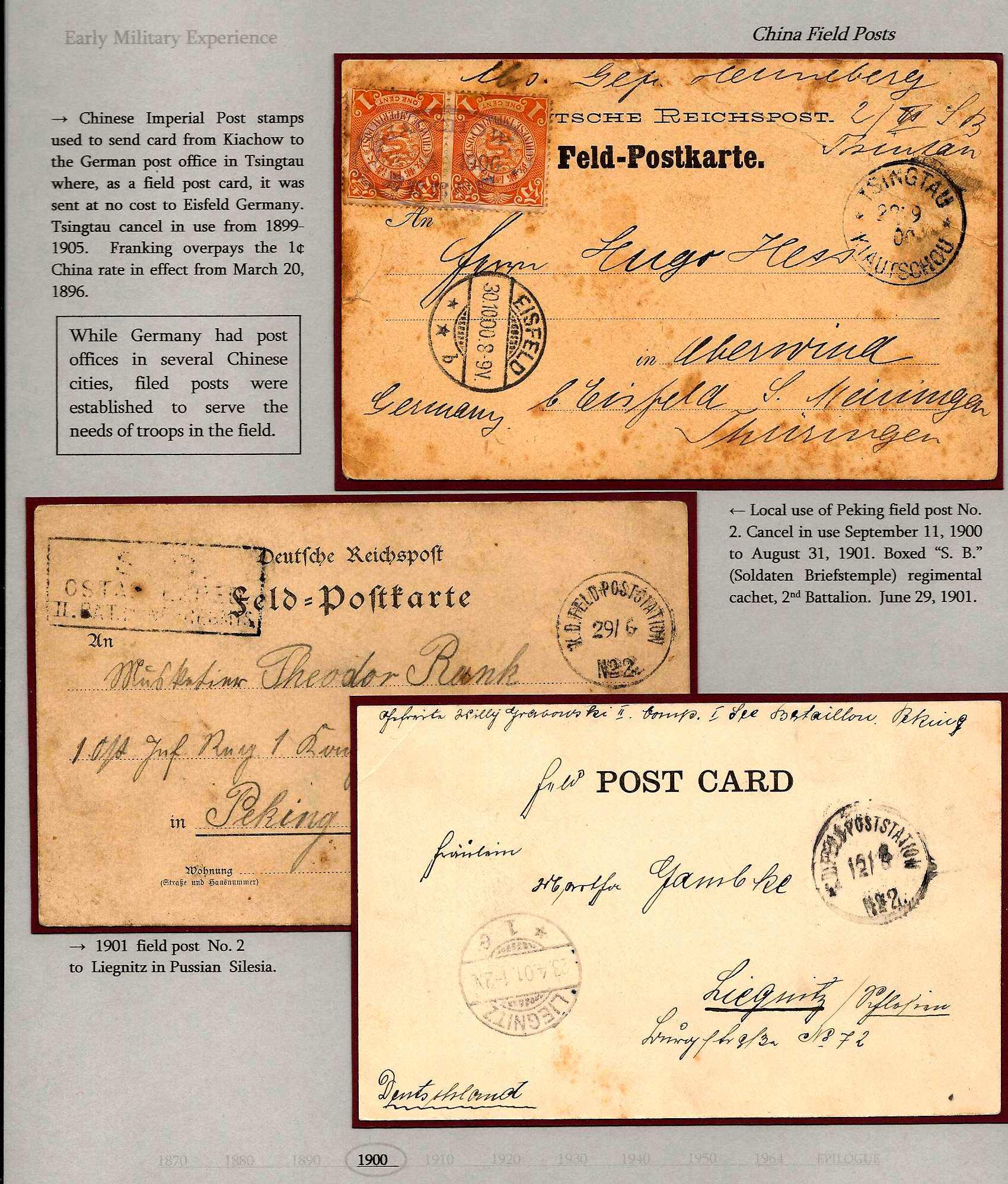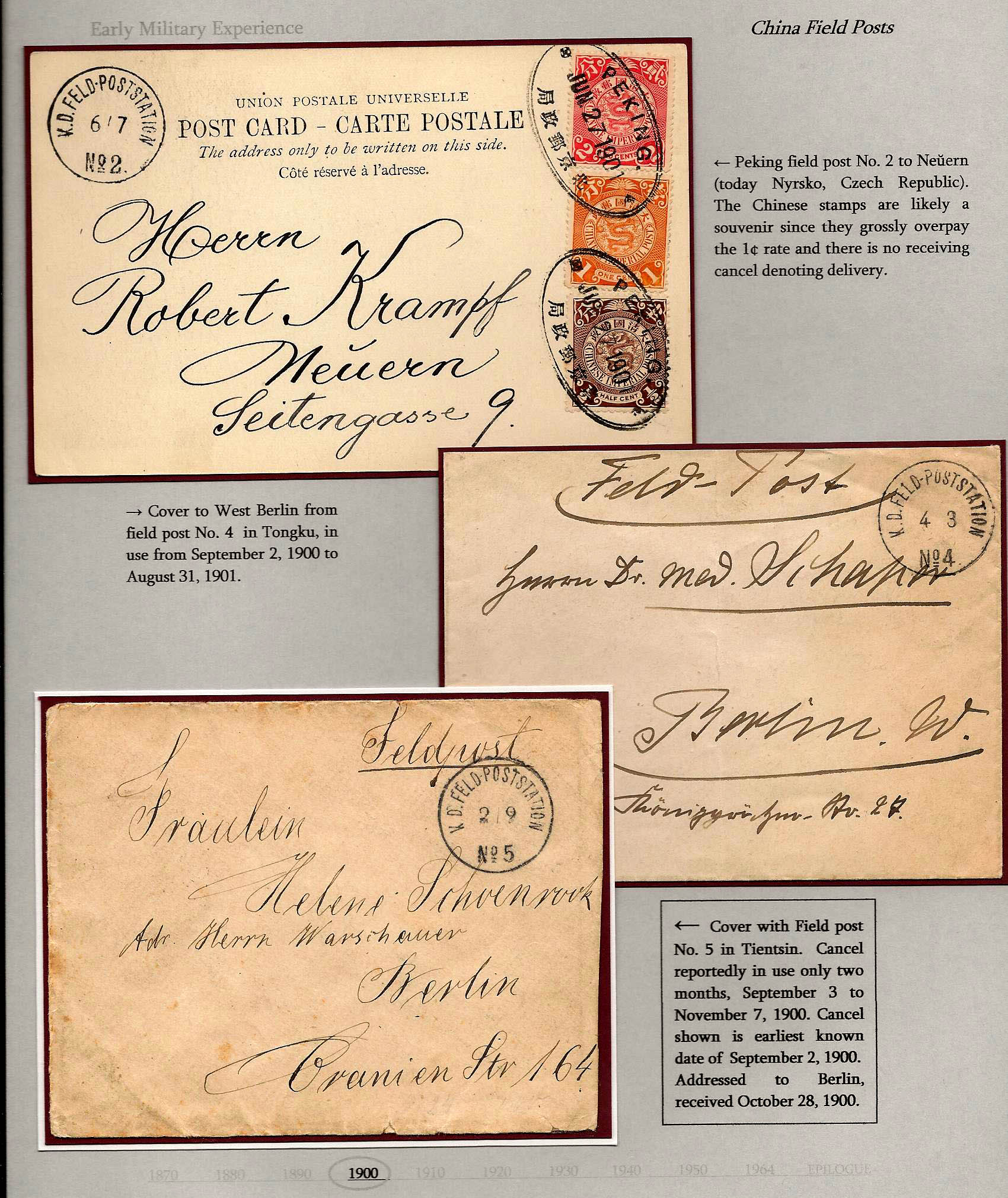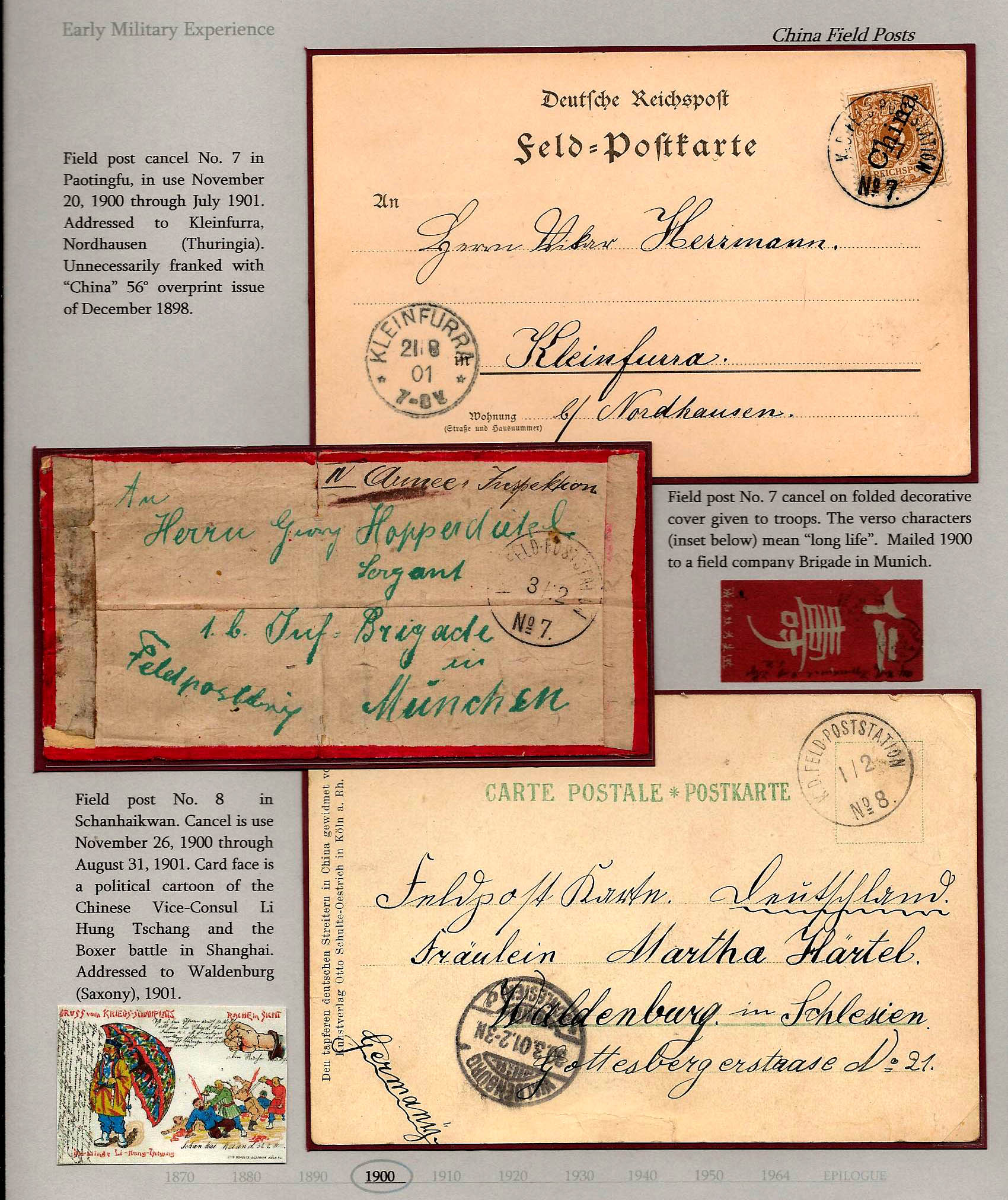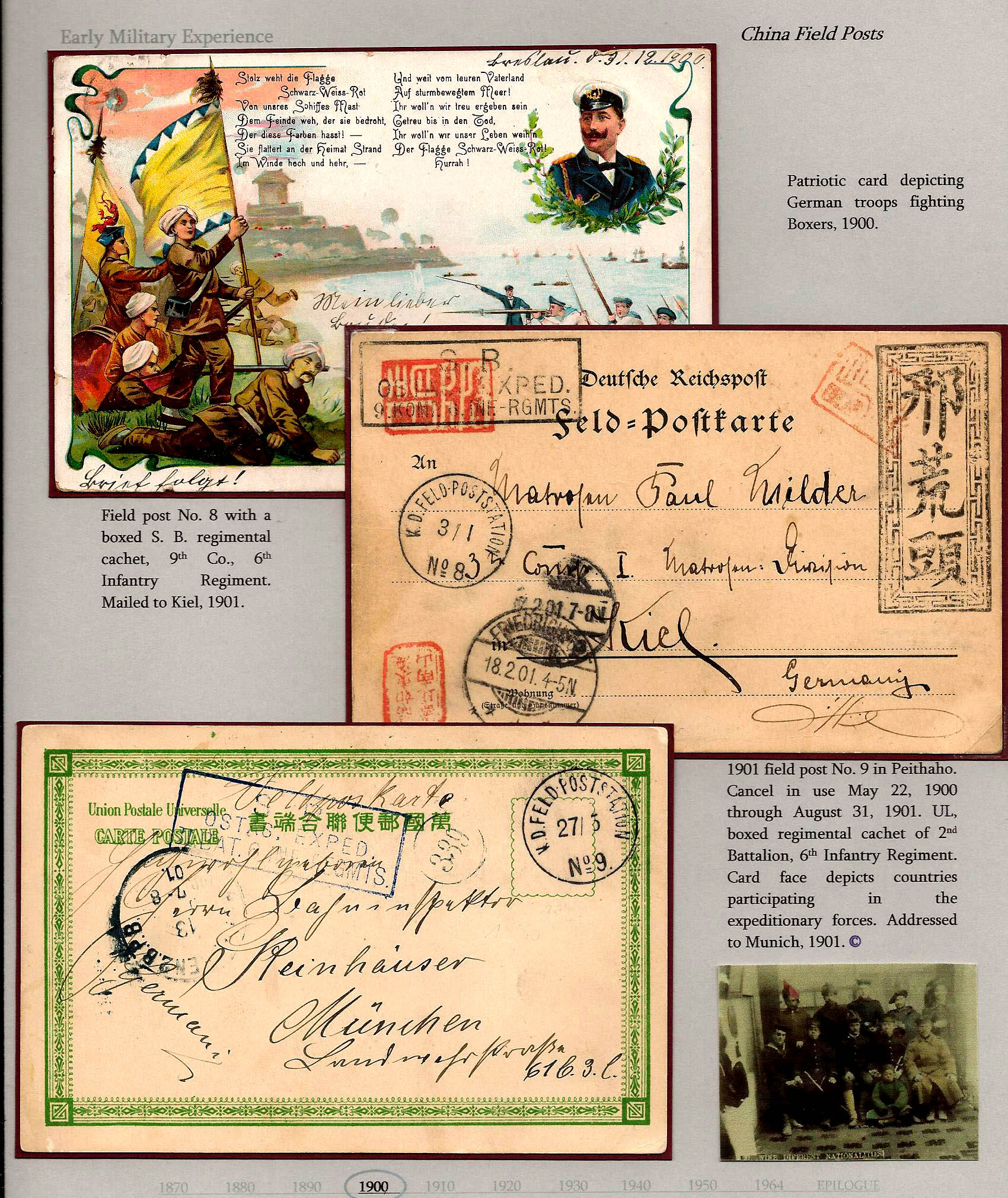PAUL von LETTOW-VORBECK:
The Events and Times that Molded the Man
SYNOPSIS
REVISION: For those who might have seen this exhibit in some former state it has been totally revised, condensed, remounted and augmented with new materials throughout. The suggestions of previous juries have been greatly appreciated and resulted in this improved exhibit.
Scope:
This is a seven frame display exhibit depicting the life of the German General, Paul von Lettow-Vorbeck, and unlike many display exhibits it spans nearly a century of philatelic and world history. The exhibit highlights the life of this extraordinary individual from his birth in Saarlouis in 1870 to his death in 1964. In addition to being a soldier he was: an activist for the return of a colonial empire; cautious in dealings with the Nazi regime; an author; and, a politician serving in the Reichstag. He was best known as the brilliant commander and master of guerilla tactics in German East Africa during WW I.
Development:
Every attempt has been made, through extensive research, to accurately depict events and details of Vorbeck’s life. The exhibit provides a series of thematic vignettes referencing the times, places and events that influenced his life. Materials used for the exhibit include period items representing postal history or other philatelic material, post cards, photographs, newspaper, book and periodical clippings, and other non-philatelic material appropriate to the story. The materials chosen thematically relate to an event, time or place which influenced his life; in some cases there is a direct relation of material to Vorbeck. However, material directly related to Vorbeck is rare as most resides in archives, museums or private collections. The exhibit is divided into five chapters as follows:
Chapter 1: 1870-1900, The Training of a Soldier (22 pages)
Birth in Saarlouis; Military Training; Early Military Experience.
Chapter 2: 1901-1914, The Molding of a Commander (26 pages)
The Hottentot and Herero Rebellions; Befriending of Jan Smuts; Command Assignments in Germany; Command in German Kamerun; German East Africa Command.
Chapter 3: 1915-1917, Vorbeck’s Role in WW I – The German East Africa Front (29 pages)
Relevance of GEA; Early Victories; Salvage of the Königsberg; Resourcefulness; Battles with Jan Smuts; Receiving the Pour le Mérite; Airship L-59; Evading the British and Allies.
Chapter 4: 1918-1927, Armistice and Return to Germany (17 pages)
Armistice; The New Germany; Colonial Activist; German Inflation.
Chapter 5: 1928-1964, The Third Reich and Postwar Years (18 pages)
Politics and the Nazis; Bremen; World War II; Final Years; Epilogue.
All items are matted in maroon and important items are double matted with maroon and white being described with bold font;certified items are designated by the symbol ©.
Balance:
As noted above the chapters are fairly well balanced. The key to any display exhibit is to judiciously use non-philatelic material allowing the majority of the story to be carried by philatelic items. The APS judging manual does not give specific guidance other than not to overwhelm the philatelic aspects of the exhibit. Previous juries have questioned the amount of non-philatelic material. To mitigate the necessity for judges to count actual material the following metrics should be useful. Out of 112 pages there are only 9 pages or 8% which have no philatelic material, 29 pages (26%), are purely philatelic, and the remaining 74 pages (66%), have both philatelic and non-philatelic items on the same page. There are a total of 407 elements in the exhibit, of which 142 or 35% are non-philatelic; the remaining 265 elements or 65% are philatelic. Accordingly, the exhibit clearly allows philatelic material to carry the story.
Condition:
A large amount of the material for this exhibit came from war zones often in tropical climates. Accordingly, covers and other items will show the normal stains, foxing and abuse expected of such usage. However, wherever possible the best material has been included.
Rarity and Difficulty of Acquisition.
Material directly related to Vorbeck is rarely found as most that remains are in archives or private collections. Much of the material, both philatelic and non-philatelic, is difficult to find owing to the limited time periods of use and the limited quantities available. Additionally the exhibit spans nearly a century thus requiring additional challenge in finding items to properly document numerous historical events and places. I have purposely tried to find not only important examples of the period, place or event but also rare items which are designated by the aforementioned double matting. The showing of the Wuga provision issue has raised some comments; however, it was commissioned by the Governor of GEA, Dr. Schnee and follows several pages of other examples of the resourcefulness of the Germans in difficult times, from minting coins from salvaged armaments to using hand stamped prepaid franks when stamps were in short supply. The Wuga issue is as much a part of this story as any of these. To reiterate, the exhibit is about the times, places, people and events that Vorbeck experienced and that influenced his life.



